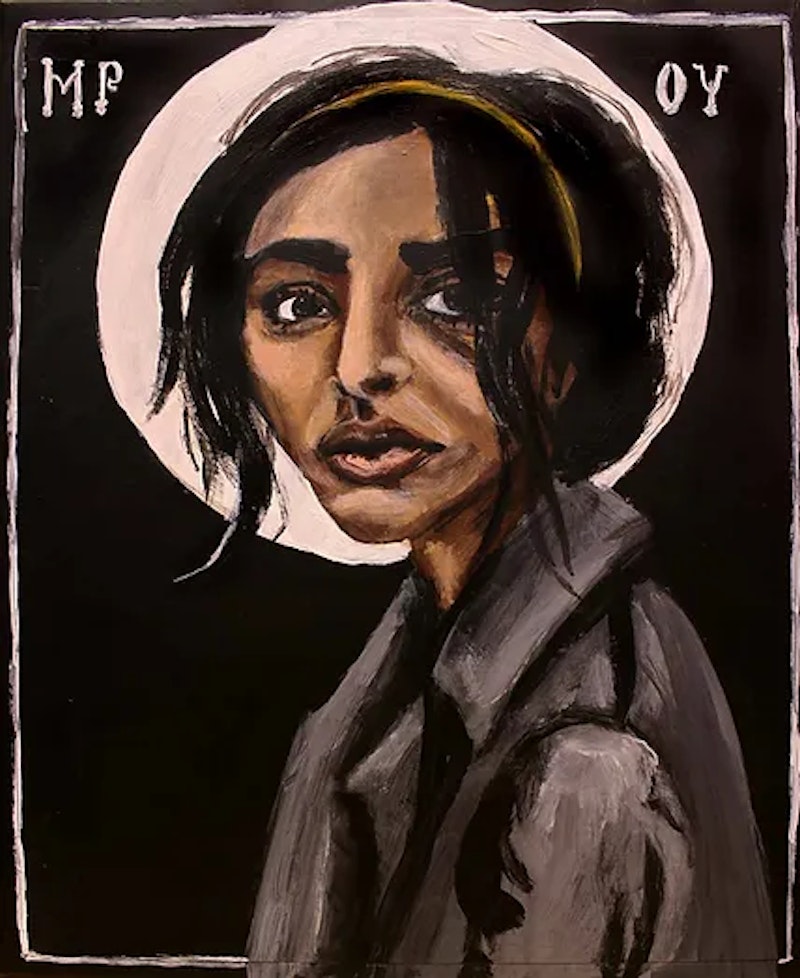It was shortly after I stopped drinking that I began talking to the Virgin Mary. It started at the Basilica of the National Shrine of the Immaculate Conception in Washington, D.C. It was the late-1980s. I was trying to get sober and went there to pray for courage and fortitude. I found a little side chapel near the Crypt Church, and settled in to start reciting some Hail Marys. Then it hit me: I was worn out and frustrated. I didn’t really feel like doing the prayers I’d known since I was a kid. I needed something else.
So I just started talking. As in, I started talking to Mary in my normal voice. No pious warm-up supplications, no exclamatory words of greeting and praise. I talked to Mary, as if we were friends. I told her I’d stopped boozing, was depressed and anxious about it, didn’t really know if I could pull it off, and there were girls I wanted to date and books I wanted to write, but I also wanted to be a good Catholic and serve the poor, but had to get my car fixed, and baseball has to be the most perfect sport, almost like God in its beauty and symmetry. I talked to her about Talk Talk, who’d just released their masterpiece album titled Spirit of Eden.
After a few minutes, I felt something strange and powerful. It wasn’t an apparition, it wasn’t voices in my head. I just knew I was being heard. A voice said: keep going. I was heard by someone who was glad that I was talking to her like my normal self. Because Mary was a Jewish teenage girl, I began to see her not as the white lady in the worldwide icons, her hands classed in prayer, eyes piously aimed upwards towards heaven. I saw her the way I did this girl Lisa that I knew in my old clubbing days in the 1980s. I used to see Lisa at Cagney’s, Poseurs, and the original 9:30 Club, and we had an instant non-sexual liking for each other. It was the kind of thing that happens with some people where you can just kind of instantly talk in a personal way about what’s going on in your life. We’d be glad to see each other. I still remember talking about love, God and the Cure under the big video screen at Cagney’s. Lisa was also a Jewish teenage girl—we were both 18. She had beautiful dark Semitic features, like the actress Lisa Edelstein with a punk rock edge.
Like a lot of the New Wave girls of the time, Lisa also had a directness about her. She didn’t curse and wasn’t vulgar, but like the cool chicks in the 80s she could tell you what was up. One night I told her there was a girl I really liked in the club. “Well,” Lisa said, “she’s not going to ask you to ask her to dance. You need to do it.” This reminded me of the famous story of the wedding at Cana. It’s a much-deciphered passage in the Bible: “On the third day there was a marriage at Cana in Galilee, and the mother of Jesus was there; Jesus also was invited to the marriage, with his disciples. When the wine gave out, the mother of Jesus said to him, ‘They have no wine.’ And Jesus said to her, ‘O woman, what have you to do with me? My hour has not yet come.’ His mother said to the servants, ‘Do whatever he tells you’” (John 2:1-5). In telling me to find the courage to go talk to the girl I liked, Lisa was telling me to make wine. God is love.
A lot of theologians don’t know what to make of the wedding of Cana story. They can’t comprehend that Mary was telling Jesus what to do—not to mention that Jesus seemed annoyed with his mother. In the Church Life Journal, published by the University of Notre Dame, scholar Julia Hajduk tried to figure it out: “The New Testament itself also constitutes a fresh, mysterious text—a notebook of clues crying out for a detective to explain the ‘intelligible pattern’ that unites them.” In mystery novels there’s what’s called a Stubborn Fact—something that’s there which defy any explanation. Hajduk: “The riddle at Cana is another such Stubborn Fact.” Why was Mary so direct, and why was Jesus—there’s no other word for it—rude? Hajduk: “Further investigation reveals that this riddle is merely the most salient in a constellation of Stubborn Facts surrounding Mary.”
I don’t think it’s that hard to figure out. Mary was the Nazarene equivalent of a cool, smart New Wave girl. Asking Jesus to turn water into wine was like Lisa stepping to the DJ at Cagney’s in D.C. and telling him to keep the party going. She was also crucial to the fact that shortly after I started talking to her I stopped drinking for good. My wine was going to be spiritual, not literal.
Before writing this essay, I talked to Mary, and that if I was about to make a huge mistake, was about to do something that dishonored her in any way, I needed to know. I don’t mind looking like a jerk, I told her, but don’t let me make you look like anything less than what you are—the world’s mother. I prayed on it for a few days. Then, a Catholic friend of mine send a picture she had come across. “Hey, did you see this icon of Mary?” she said. “It’s pretty wild.”
Although it was the first time I had seen the icon, by artist Gracie Morbitzer, I’d seen the face before.

